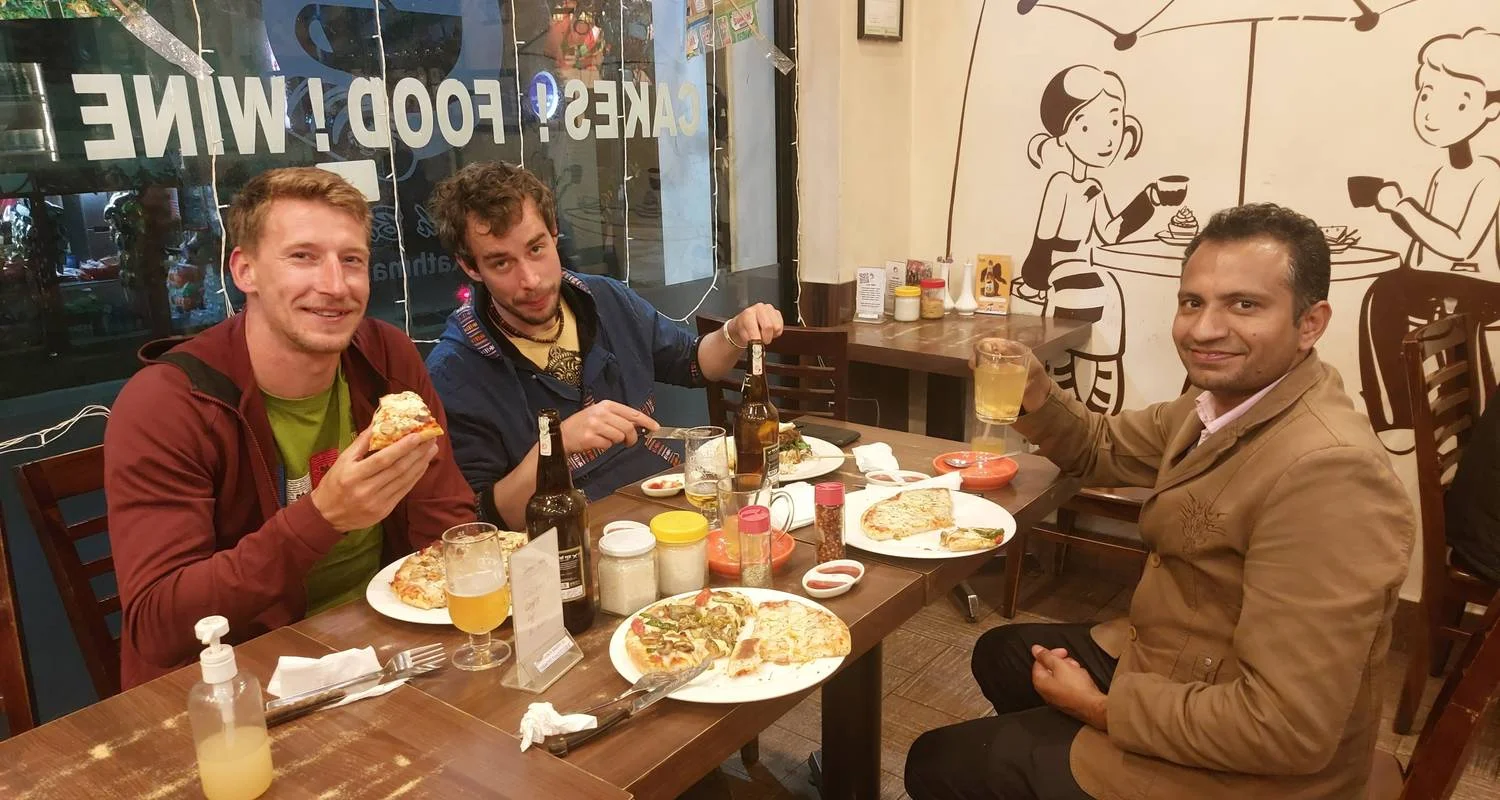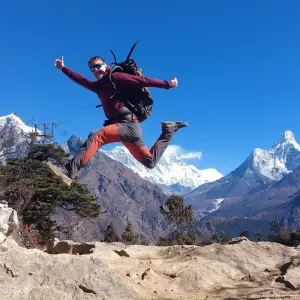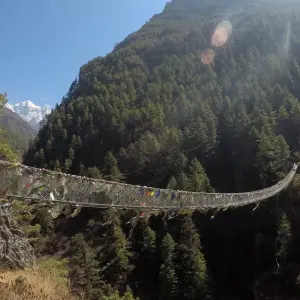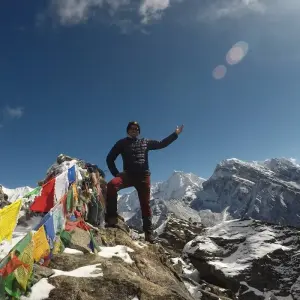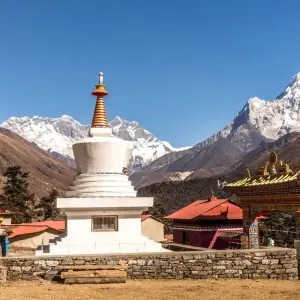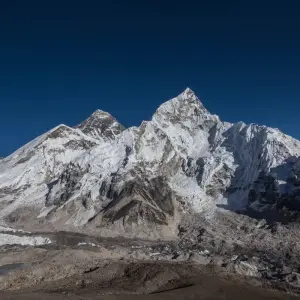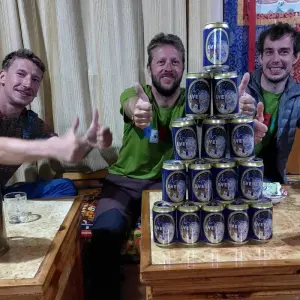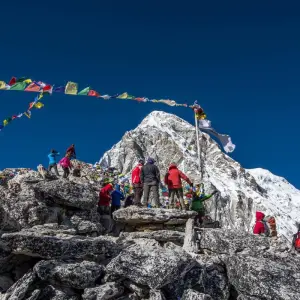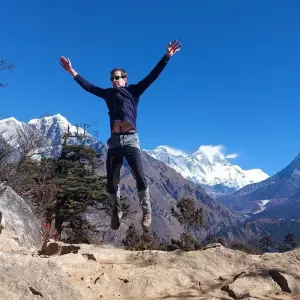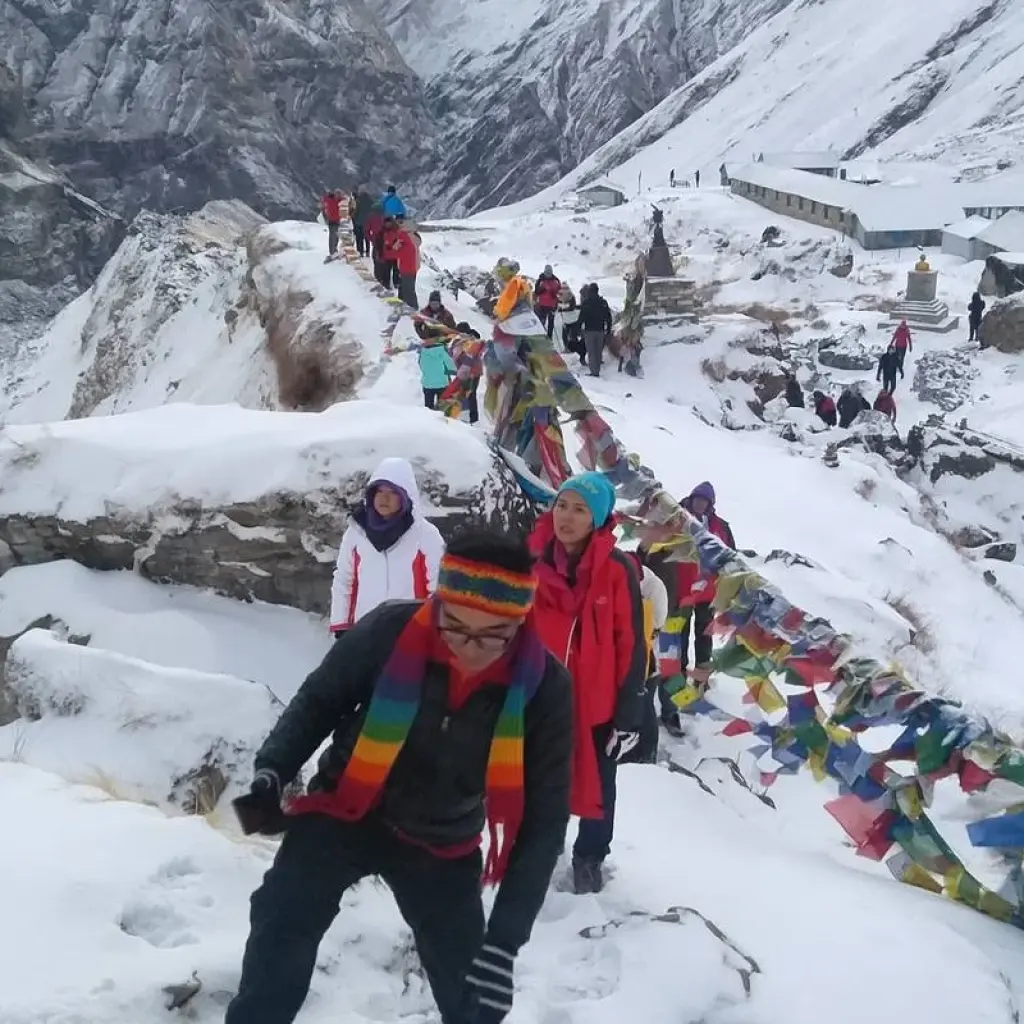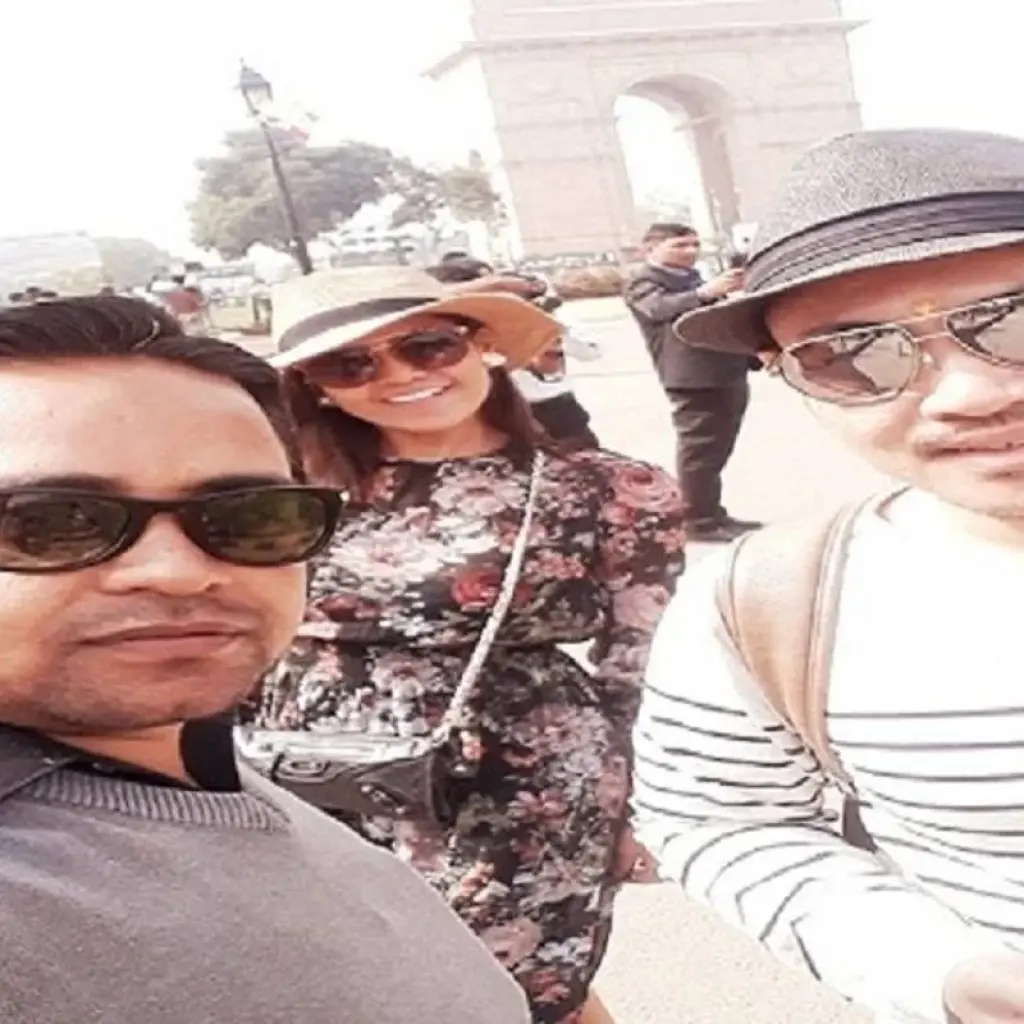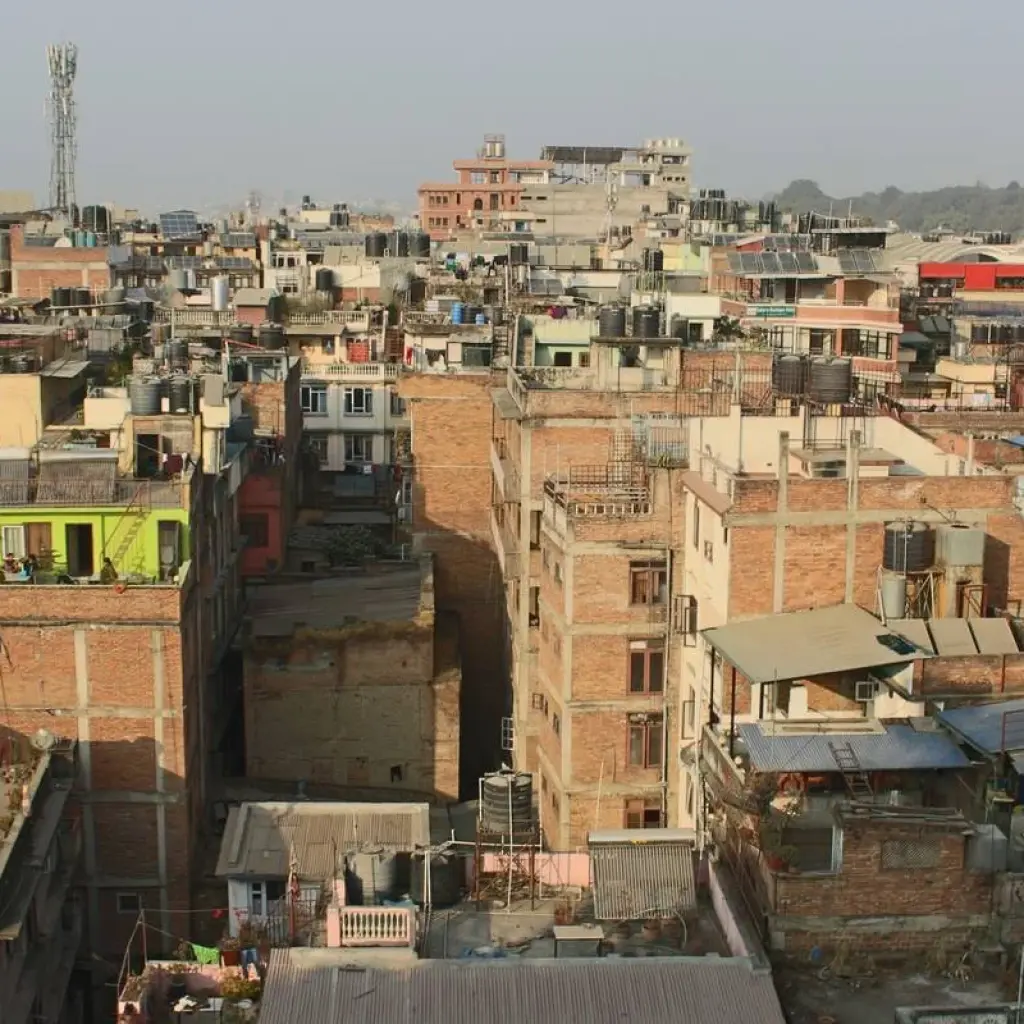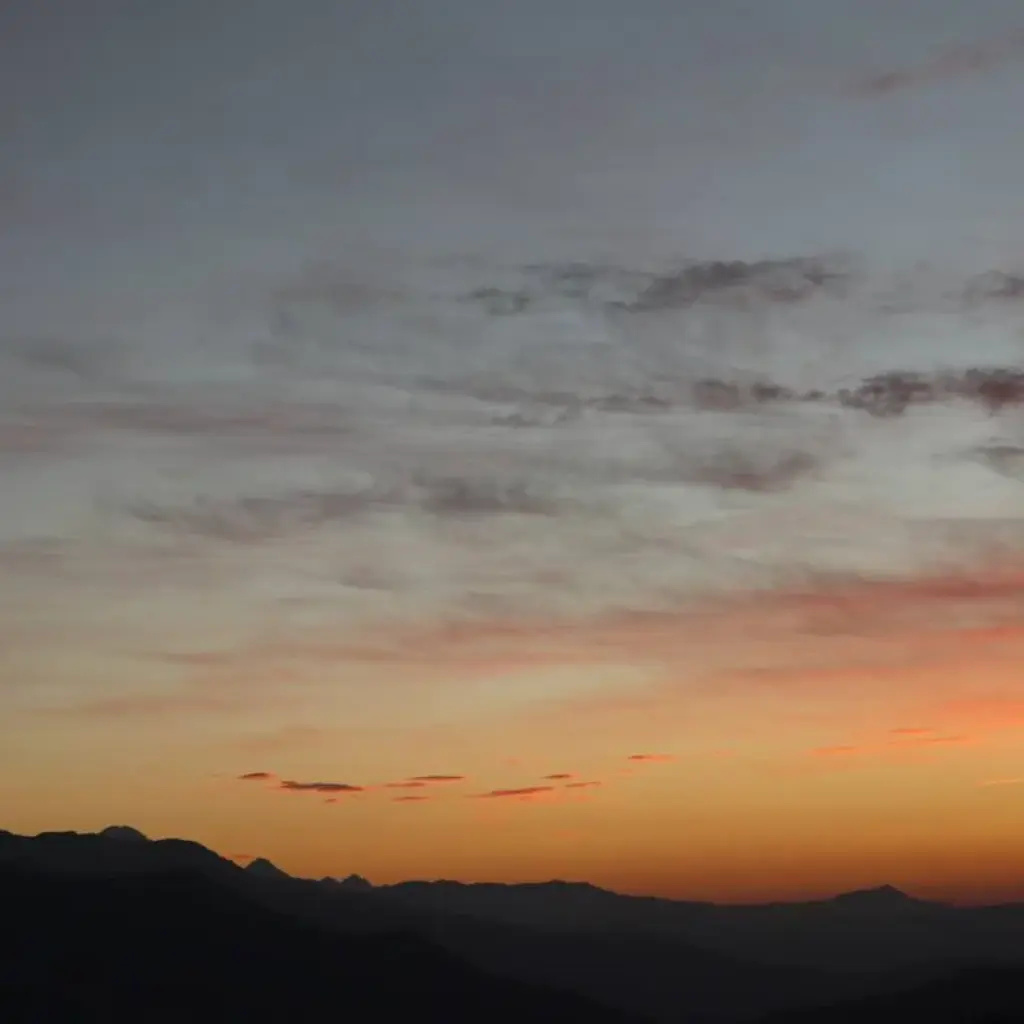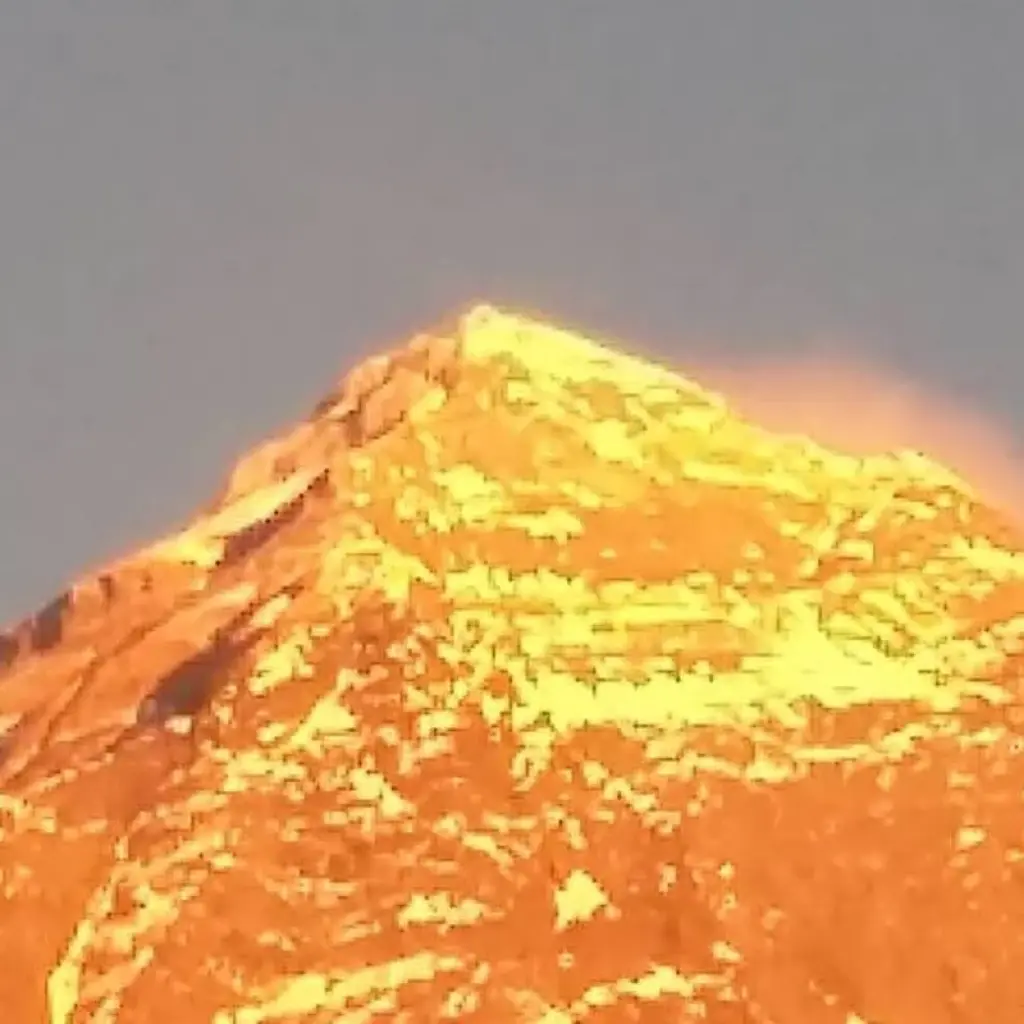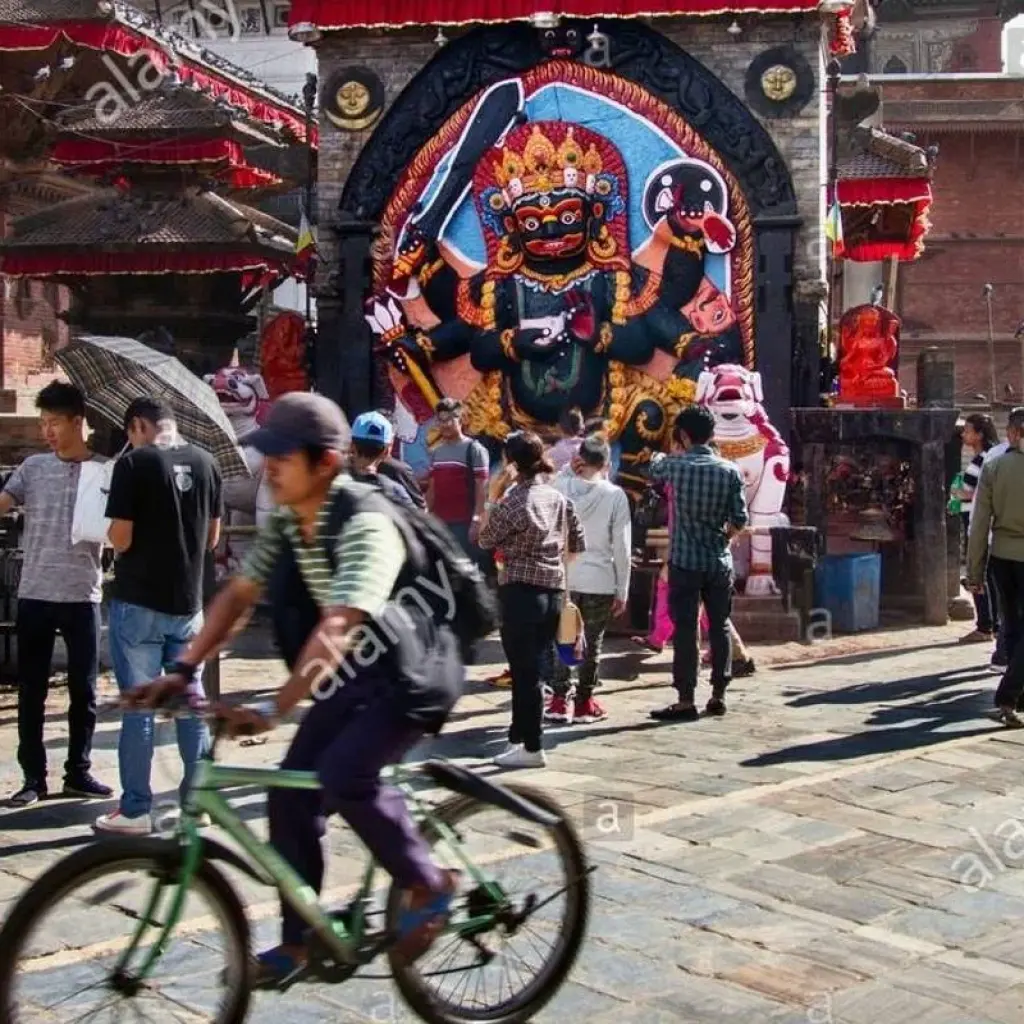Itinerary
Every single trekking enthusiast and backpacker aspires to get as far as the Everest Base Camp (5,364 m) and contemplate the snow-capped peaks in amazement. In the heartland of formidable Himalayas lies the world’s highest peak, Mt. Everest aka Sagarmatha in Nepali i.e. accompanied by other renowned summits of Mt. Lhotse (8,516m), Mt. Pumori (7,161m), Mt. Nuptse (7,855m) and many more. The desire to achieve the fantasy that embraces the prepossessing 360o outlooks of these alluring snow-capped mountain peaks attracts thousands of visitor, trekkers, and mountaineers to Khumbu region throughout the year.
The Everest base camp Kalapathar trek commences with stupendous and splendid 35 minutes flight to Lukla. From here, we advance on declining trip along the bank of Dudh Koshi river and trek through the small village of Phakding to Namche Bazaar i.e. also celebrated as “Gateway to Mt. Everest”. Actually, from this point onwards, there are many routes to reach the Everest Base Camp (5,364 m). These renowned routes are Kalapathar, Gokyo, Jiri, and Renjo pass trails. These routes are equally audacious and carry their own significant importance. On our case, we now trek to the village of Tengboche (3,870m) that showcases a spectacular monastery with the noteworthy outlook of Mt. Everest (8,848m), Mt. Ama Dablam (6,812m) and so forth. Afterward, we trek to Dingboche where we’ll have a day for resting and acclimatization purposes. In addition, we can enjoy the beautiful mountain outlooks. We resume our trek to Lobuche; then advance to Gorak Shep (5,170m) the next day. From here, we trek towards the Everest Base Camp. The Base Camp renders the alluring vistas that include the snowy peaks of Nuptse, Khumbuste, and Pumori. Eventually, we arrive at Kalapathar, the world-famous viewpoint that bestows awe-inspiring panoramas adorned with snow-covered summits of Everest, Pumori, Lingtren, Khumbetse, Nuptse, Lhotse, Ama Dablam, Thamserku parallel with many other mountaintops. Subsequently, trek to Pheriche then back to Namche Bazaar and conclude our escapade at Lukla.
Keeping the bewitching vistas aside, we also get to interact with native Sherpa communities and experience their lifestyle, culture, traditions, and hospitality throughout the whole expedition. Buddhism influenced prayer flags, Chortens, mani walls and gompas render an essence of spirituality deep inside as you spend more time in this mesmerizing land of Sherpas.
Tour program
Aankomst in Kathmandu (1350m): Transfer naar hotel
Start point
Tribhuvan International Airport (KTM) त्रिभुवन विमानस्थल, त्रिभुवन विमानस्थल, Kathmandu, Bagmati, Nepal
Vroege ochtendvlucht naar Lukla (2.840m) en trektocht naar Phakding (2.610m) 30 minuten vliegen, 5-6 uur trekken
Early in the morning, we’ll take a pre-scheduled flight to Lukla. This spectacular flight lasts about 30 minutes progressing above the snow-capped peaks of the Himalayan Range. Breathtaking aerial vistas can be observed from the Plane. As soon as the flight lands, we’ll commence our trekking journey on the trail, which advances beyond the scenic terrain to the Sherpa village of Chheplung (nearly 30 minutes below Lukla). The trail continues across a side valley beneath Kusum Kanguru, a trekking peak soaring 6,369m asl. Accompanied by this splendid sight, the trekking trail then passes through Ghat (2,550m), a village famed for the cluster of boulders inscribed with the Buddhist mantra: Om Mani Padme Hum for over a hundred times. At the end of the day, we arrive at Phakding (2,610m).
Nowadays, you must travel to Ramechhap during peak seasons (Oct to Nov) and (March to April). start from Kathmandu to Ramechhap at 1:00 am and reach about 6:00 am and flight to Lukla for 15 minutes and the same way back to Kathmandu after the trip over.
Phakding naar Namche bazaar (3.340m) 5-6 uur trekken
Today, we tighten our shoe laces up and proceed on the trail along the western bank of Dudh Koshi to Benkar (2,700m). This particular village features hot springs contained in a shed and a neat waterfall. Afterwards, the trail traverses to the eastern bank of Dudh Koshi River and make its way through woodland of rhododendron and Blue pine to Chumoa and Mondzo, situated on the edge of Sagarmatha National Park. Here, we are required to show our permit or obtain one if we don’t have any. We’ll now advance to Monjo village (2,800m) and pursue an abrupt trail that abruptly descends across Monjo Khola. Afterwards, the trail drops to Jhorsalle (2,804m) after navigating past the Dudh Koshi River again. Eventually, we arrive at the conflux of Dudh Koshi and Bhote Koshi Rivers. From here, we’ll make a precipitous climb to a suspension bridge across Dudh Koshi River. Subsequent to a brief steady ascent through the forest, we reach Namche Bazaar (3,340m) that extends alluring mountain vistas.
Acclimatisatiedag in Namche Bazaar (3.340m)
Well renowned as the Sherpa ‘capital’ and administrative centre of the Khumbu region; Namche Bazaar is home to an army camp and the headquarters of Sagarmatha National Park. It is a market town that hosts weekly market every Saturday morning where traders from other places put their goods for sale. Note that this market operates till mid-day. Furthermore, Namche flaunts internet cafes, an ATM, a bank, a German bakery, Medical and Tibetan souvenir shops alongside dozen of shops. Namche is an excellent place to acclimatize as it boasts numerous trails to surrounding villages and vintage points to aid in accommodate in higher elevations with low oxygen levels. On top of that, this very Sherpa village presents the delightful panorama of gigantic peaks including Everest, Lhotse, Nuptse, Ama Dablam, and Taweche in a clear day. You can also get familiar with ethnic Sherpa customs and traditions succeeding a tour of Village.
Trektocht naar Tengboche (3.870m) 5-6 uur
This very day, we’ll trek on the trail, which initially advances through the Khumjung region then progress to prime route to Everest Base Camp at Shanasa. Afterwards, the trail makes headway to Trashinga then Phunkitenga (3,250m) where it traverses the Dudh Koshi River. Phunkitenga harbours an army checkpoint that examines trekker’s permit. Further, a broad and vertical climb uphill across the woodland composed of Juniper, Fir, Pine and Rhododendron leads to Tengboche (3,870m). The village flaunts the vistas encompassing peaks like Everest, Ama Dablam, Kantega etc. Moreover, it harbours Tengboche Monastery aka Dawa Choling Gompa, the largest of its kind in Khumbu region. Tengboche also functions as a lookout point displaying sublime sunset vista over Mt. Everest and Mt. Ama Dablam.
Tengboche / Dingboche
Dingboche Vrije Dag
The day seven of our adventure is allocated for the second acclimatization. As the elevation keeps on increasing, we are required to get adapt with the surrounding in order to avoid difficulties like Acute Mountain Sickness (AMS). If sitting ideal does not match your preference, you can hike in the magnificent Chhukung Valley. Also, you can trek to Nangkartshang Hill (5,090m), which showcases admirable vistas of Ama Dablam, Lhotse, Island peak, Makalu and incredible view of the valley. This trek utilizes about 4-5 hours. But we strongly urge you to provide acclimatizing time to your body so that it can prepare itself for upcoming arduous journey.
Dingboche naar Lobuche (4.960m): 5/6 uur
Accompanied by majestic outlook of Tawache and Cholatse peaks; today, we ascend on a ridge. Thereupon, we advance beyond the pasturelands and walk across a wooden bridge to Dughla (4,620m). From here, the trail ascends precipitously to the crest of a glacial moraine then continues past the memorial dedicated to the fallen climbers and Sherpa during numerous Everest expeditions. We also get to observe the astonishing sight encompassing Lingtren (6,697), Pumori (7,145 m), Lingtren (6,697), and Mahalangur Himal. You are deprived of the Everest view here as the world’s highest mountain is concealed behind the lofty wall of Lhotse and Nuptse. After a short hike, we’ll reach Lobuche (4,960m)
Lobuche naar Gorakshep (5.170m):4/5 uur
Visit Everest Base Camp (5,364m) From Lobuche, we’ll begin our trek on rock-strewn trail through the Khumbu Glacier to set foot in Gorak shep (5,170m). We’ll then make our climb to Everest Base Camp (EBC). The Base camp is a wonderful place where you can reach via trekking only (without use of mountaineering equipment). Here, you can get a sight of colourful camps set up by the mountaineers during their Everest expedition. Don’t expect a warm welcome from the climbers there, respect their privacy and concentrate to fulfil your Everest dream i.e. sightseeing and snapping pictures. You may be disappointed as you don’t observe the full picture of colossal Mt. Everest from bottom to top as expected because you are too near to the mountain itself. But, you can contemplate striking Khumbu Icefall. On top of that, you can also get the awe-inspiring glimpses of snowy mountaintops including Pumori, Mahalangur, Lingtern, Khumbutse, Nuptse, and many more. In the end, we’ll return back to Gorak Shep (5,170m).
Gorakshep naar Kala Patther (5.545m) wandeling en Pheriche (4.288m):6/7 uur
Today, early in the morning, we will make our way to Kalapatthar. At the elevation of 5,545m; Kalapatthar is the highest point of our trek and also widely celebrated viewpoint in the Khumbu region, located further and at a higher elevation than Everest Base Camp. Therefore, this viewpoint tends to turn your Everest dream into reality by showcasing the full view of the world’s highest peak in close proximity. This spot also flaunts sight of the mesmerizing sunrise above the Mt. Everest aka Chomolungma or Mother Goddess of the Universe in Tibetan and Sagarmatha in Nepali respectively. Furthermore, it is the ultimate location to enjoy the panoramic outlook encompassing snow-capped mountaintops of Everest, Ama Dablam, Lhotse, Nuptse, Pumori, Lingtren, Khumbutse, Changtse, and many more. Else, just above the Lho La pass, we can discover the colossal face of Changtse (7,750m). Since there are no accommodation facilities available here; we’ll trek back to Pheriche (4,288m).
Pheriche naar Namche Bazaar (3.340m):6/7 uur
On the break of the dawn, we pursue the trail, which progresses back to Pangboche through the green woodlands. Subsequently, the trail advances across Tengboche. En route, we’ll probably confront exquisite Himalayan wildlife, Himalayan Tahr, Pheasants, Musk deer and much more. The trail now descends along the Dudh Koshi River to Phunki Tenga then ascends to Khumjung region past Sanasa Village. Eventually, the trail leads the way to Namche Bazaar (3,340m).
Namche Bazaar naar Lukla (2.840m): 6/7 uur
The trail makes a downhill descent beyond the suspension bridges to the village of Monjo. Following the progress across the villages of Chumoa and Mondzo; the trail passes to the other side of rhododendron and fir woodland. Complemented by lush greenery with snowy mountaintops as the backdrop; the trail now traverses suspension bridges, numerous Sherpa settlements. Without any obstacles to break off, the trail finally reaches the village of Phakding (2,610m). From this point onwards, the trail ultimately ends up at Lukla (2,840m).
Lukla naar Kathmandu: 35 min. vliegen/ Lukla naar Ramechhap vliegen in een vliegtuig en terugrijden naar Kathmandu
Today, you’ll head to Kathmandu from Lukla via a scenic flight that will take about 30 minutes. The flight delivers the lovely aerial outlooks comprising snow-capped mountains of the formidable Himalayan Range.
Nowadays, you must travel to Ramechhap during peak seasons (Oct to Nov) and (March to April). start from Kathmandu to Ramechhap at 1:00 am and reach about 6:00 am and flight to Lukla for 15 minutes and the same way back to Kathmandu after the trip over.
Vertrek
Today is the last day of your escapade in Nepal. Following farewells, one of our representatives will guide you to the Kathmandu Airport, 3 hours before your flight’s actual time of departure. We wish you a safe flight back home!!
End point
Kathmandu, Bagmati, Nepal
Tour Details
accommodation
- 2 nachten luxe hotelaccommodatie in Kathmandu met ontbijt
- Alle accommodaties in de bergen volgens de reisbeschrijving
flights
- Kathmandu naar Lukla met de vlucht/seizoen tijd van Ramechhap naar Lukla
- Lukla naar Kathmandu vlucht na de reis/Lukla naar Ramechhap heen en terug
guide
- Professionele Engelssprekende gids en zijn salaris, eten, verzekering, vlucht en accommodatie
meals
- Welkomstdiner in Kathmandu vóór de reis
- Ontbijt is inbegrepen in Kathmandu
- Tijdens je trektochten zijn er volledige maaltijden inbegrepen
- Afscheidsdiner na de tocht
optional
- Als je een helikopter wilt nemen van Gorakshep naar Lukla kost dat USD 1900 voor 2 personen.
Beste seizoen voor de Everest Base Camp trektocht
Het Himalaya Trekkingpad biedt de mogelijkheid om de Everest Base Camp trektocht op elk moment van het jaar te ondernemen. Elk seizoen heeft zijn eigen ervaringen en wij kunnen je voorzien van uitgebreide informatie over de seizoenen en hun hoogtepunten. Laat ons weten welke periode je voorkeur heeft en we helpen je graag om je droomreis werkelijkheid te laten worden.
Herfstseizoen: September tot november
De herfst is de perfecte tijd om aan de Everest Base Camp Trek te beginnen, net als in andere delen van Nepal. Tijdens dit seizoen neemt de hoeveelheid regen af en maken zonnige dagen plaats voor levendig groen op lagere hoogten en heldere luchten daarboven. Het klimaat is over het algemeen aangenaam, met warme temperaturen en stabiele weersomstandigheden. Deze periode biedt een uitstekende gelegenheid om de adembenemende Himalaya bergketens te aanschouwen en jezelf onder te dompelen in de schoonheid van weelderig groene valleien. In deze tijd van het jaar zijn de theehuizen vaak volgeboekt vanwege het grote aantal toeristen op de route. Af en toe kun je langs de route te maken krijgen met opstoppingen. Als je overweegt om aan de Everest trekking te beginnen, is het aan te raden om van tevoren te reserveren, zodat je zeker bent van accommodatie in de theehuizen langs de route.
Voorjaarsseizoen: Maart tot mei
De lente, na de herfst het meest geliefde trekkingseizoen in Nepal, biedt adembenemende uitzichten op bloeiende landschappen en weelderig groen langs de lager gelegen delen van de Everest Base Camp Trek route. De tocht is versierd met schilderachtige Himalaya uitzichten als achtergrond. Tijdens dit seizoen zijn de dagen langer en blijft het weer stabiel. Zelfs in het basiskamp is de temperatuur relatief mild. Als je liever reist in aangename temperaturen met langere daglichturen, boek dan je reis voor dit seizoen.
Winterseizoen: December tot februari
Als je op zoek bent naar rust, dan is de Everest Base Camp trektocht perfect in de winter. Je kunt deze trektocht het beste maken tussen december en februari voor een serene ervaring. Als het weer goed is, kun je een ervaring verwachten die vergelijkbaar is met het hoogseizoen. Omdat de winter wordt beschouwd als het laagseizoen van Nepal, krijg je overal een uitstekende behandeling. Het is echter belangrijk om te weten dat regen, sneeuwval, wolken, stormen en geannuleerde vluchten in deze periode vaak voorkomen. We nodigen je uit om mee te gaan op een wintertrekking als je genoeg tijd en de juiste uitrusting hebt.
Moesson: Juni tot augustus
De Everest Base Camp trektocht tijdens het moessonseizoen kan behoorlijk uitdagend zijn. De bewolkte lucht leidt vaak tot annuleringen van vluchten tussen Kathmandu en Lukla, waardoor het moeilijk is om het begin van de tocht te bereiken. Bovendien wordt het pad zelf glad en nat, wat het algehele ongemak nog groter maakt. De ervaring hangt sterk af van de weersomstandigheden; als het weer gunstig is, kun je een lonende tocht verwachten. Als het echter slecht weer wordt, kun je teleurgesteld raken door beperkte uitzichten en mogelijke vertragingen van je vlucht. Desalniettemin, als je voldoende tijd en de juiste uitrusting hebt, zijn wij er om je tijdens de hele trektocht te begeleiden.
Reisverzekering voor Everest Base Camp Trek
Onze grootste zorg is jouw veiligheid, want we zijn volledig toegewijd aan het leveren van een uitzonderlijke ervaring tijdens jouw expeditie naar Everest Base Camp Trek. Het is verplicht om een reisverzekering te hebben voor deze avontuurlijke reis in Nepal, en we raden het ten zeerste aan voor je veiligheid. We dringen er bij alle trekkers op aan om een geschikte reisverzekering af te sluiten voor reddingsoperaties, diefstal en medische noodgevallen.
Hoe kun je je voorbereiden op de bestrijding van acute bergziekte?
- Zorg voor voldoende hydratatie door dagelijks ongeveer 3 tot 4 liter water te drinken.
- Maak rustige wandelingen en denk eraan om tijdens je trektocht elke 30 minuten een pauze te nemen.
- Het is belangrijk om je aan de instructies van je gids te houden en de geplande route te volgen.
- Vermijd haast en onnodige zorgen tijdens je tocht.
- Neem voldoende voedsel om je uithoudingsvermogen weer op peil te brengen.
- Geniet van de schoonheid van de natuur en het omringende landschap.
- Afzien van alcohol en roken op hoogtes boven 4000 meter is cruciaal voor het behouden van een goede gezondheid en het voorkomen van hoogteziekte.
Everest Basiskamp Trek Paklijsten
- Essentiële uitrusting: Bereid een rugzak of dagrugzak (40L) voor, afhankelijk van of je een drager gebruikt.. Vergeet niet om een 2-3-liter waterfles, wandelstokken, een waterzuiveringsmethode en een slaapzak met voering mee te nemen (denk aan een capaciteit van -20 graden voor trektochten in de winter).
- Hoofddeksels: Om jezelf tegen de zon te beschermen kun je kiezen tussen een zonnehoed of een sjaal. In koudere klimaten is het aan te raden om een wintermuts of een muts met windrand te dragen die je beschermt tegen de winterse elementen. Daarnaast is het altijd verstandig om een hoofdlamp met reservebatterijen bij je te hebben, zodat je in elke situatie voldoende verlichting hebt.
- Gezichtsbeschermers: Als het gaat om het beschermen van je huid, vergeet dan niet om zonnebrandcrème, zonnebrillen met UV-bescherming en gezichts- en lichaamsdoekjes op te nemen in je dagelijkse routine. Deze producten spelen een belangrijke rol bij het beschermen van je huid tegen schadelijke UV-stralen en het schoon en fris houden van je huid.
- Handkleding: Lichtgewicht handschoenen bieden comfort en flexibiliteit, terwijl zware winterhandschoenen superieure isolatie bieden voor extreme koude.
- Lichaamsvereisten: Voor een geslaagde wandelervaring is het belangrijk om de juiste kleding te dragen. Dit omvat wandelshirts van synthetische vezels, shirts met lange mouwen, een regenjack met capuchon, een fleecejack, lichtgewicht katoenen broeken, ondergoed van polypropyleen, een donsjack voor wintertochten en waterdichte jassen en broeken.
- Schoeisel: Tot het schoeisel behoren waterdichte wandelschoenen, dikke wollen sokken en sportschoenen of sandalen voor ontspanning tijdens de trektocht.
- Toiletartikelen: Als je gaat wandelen, zorg er dan voor dat je een sneldrogende handdoek, tandenborstel, tandpasta, toiletpapier, zeep, douchegel, waspoeder, nagelknipper en een compact spiegeltje meeneemt.
- Regenbescherming: Als je je voorbereidt op regen, is het belangrijk om naast regenbescherming ook winddichte kleding mee te nemen. Hieronder vallen regenjassen of poncho's en tassenhoezen, maar ook stijgijzers voor het ijzige en gladde pad.
Hoeveel Nepalees geld heb je nodig voor de Trek voor Extra Service?
transport
- Al het vervoer per privévoertuig
- Vlucht van Kathmandu naar Lukla of van Ramechhap naar Lukla
- Lukla naar Kathmandu of Lukla naar Ramechhap vlucht in een vliegtuig
- Kathmandu naar Ramechhap in een Jeep
- Ramechhap naar Kathmandu in een Jeep
Good to know
Currency
Nepalese Rupee
Nepal

